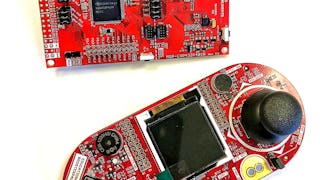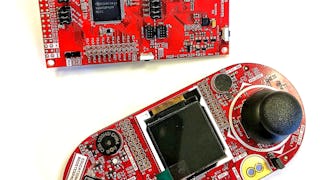Advanced Architectures in Embedded Software Design is an intermediate-to-advanced course built for engineers who want to architect embedded systems that are modular, scalable, and resilient in real-world deployments. Whether you’re working on IoT devices, industrial controls, robotics, or wearables, success depends on your ability to build software that can evolve with hardware, support real-time responsiveness, and operate within tight power and memory constraints.



Advanced Architectures in Embedded Software Design

Instructor: Hurix Digital
Access provided by Securities and Futures Commission
Recommended experience
Skills you'll gain
Details to know

Add to your LinkedIn profile
September 2025
See how employees at top companies are mastering in-demand skills

There are 3 modules in this course
In this opening lesson, you'll dive into the foundational principles that shape efficient embedded systems design. We’ll explore how Real-Time Operating System (RTOS) integration enables precise task scheduling and responsiveness, laying the groundwork for scalable, reliable applications. You’ll also examine low-power design strategies that extend battery life and reduce energy consumption which is critical for modern IoT and mobile devices. Finally, we’ll unpack memory optimization techniques that help you improve maximum performance out of limited resources, balancing speed, size, and stability.
What's included
3 videos2 readings1 assignment2 plugins
In this lesson, you’ll explore how reusable code structures and multi-threading can dramatically improve the efficiency, scalability, and maintainability of your software. You’ll learn how modular design patterns—such as function libraries, object-oriented components, and template-based logic—allow developers to write once and deploy often, reducing redundancy and simplifying updates across projects. Then, you’ll dive into multi-threading: the art of running concurrent tasks within a single application. Whether you're managing sensor input, UI responsiveness, or background data processing, multi-threading helps you maximize performance and responsiveness without overloading system resources.
What's included
1 video1 reading1 assignment1 plugin
In this final lesson, you’ll step into the high-stakes world of safety-critical systems, where failure isn’t just inconvenient—it can be catastrophic. You’ll explore inter-process communication (IPC) techniques that allow isolated components to share data securely and efficiently, even under strict timing constraints. You’ll also examine the architectural and regulatory considerations that guide safety-critical design, including fault tolerance, deterministic behavior, and certification standards.
What's included
2 videos1 reading3 assignments1 plugin
Instructor

Offered by
Why people choose Coursera for their career




Explore more from Computer Science

University of Colorado Boulder

University of Colorado Boulder
¹ Some assignments in this course are AI-graded. For these assignments, your data will be used in accordance with Coursera's Privacy Notice.



